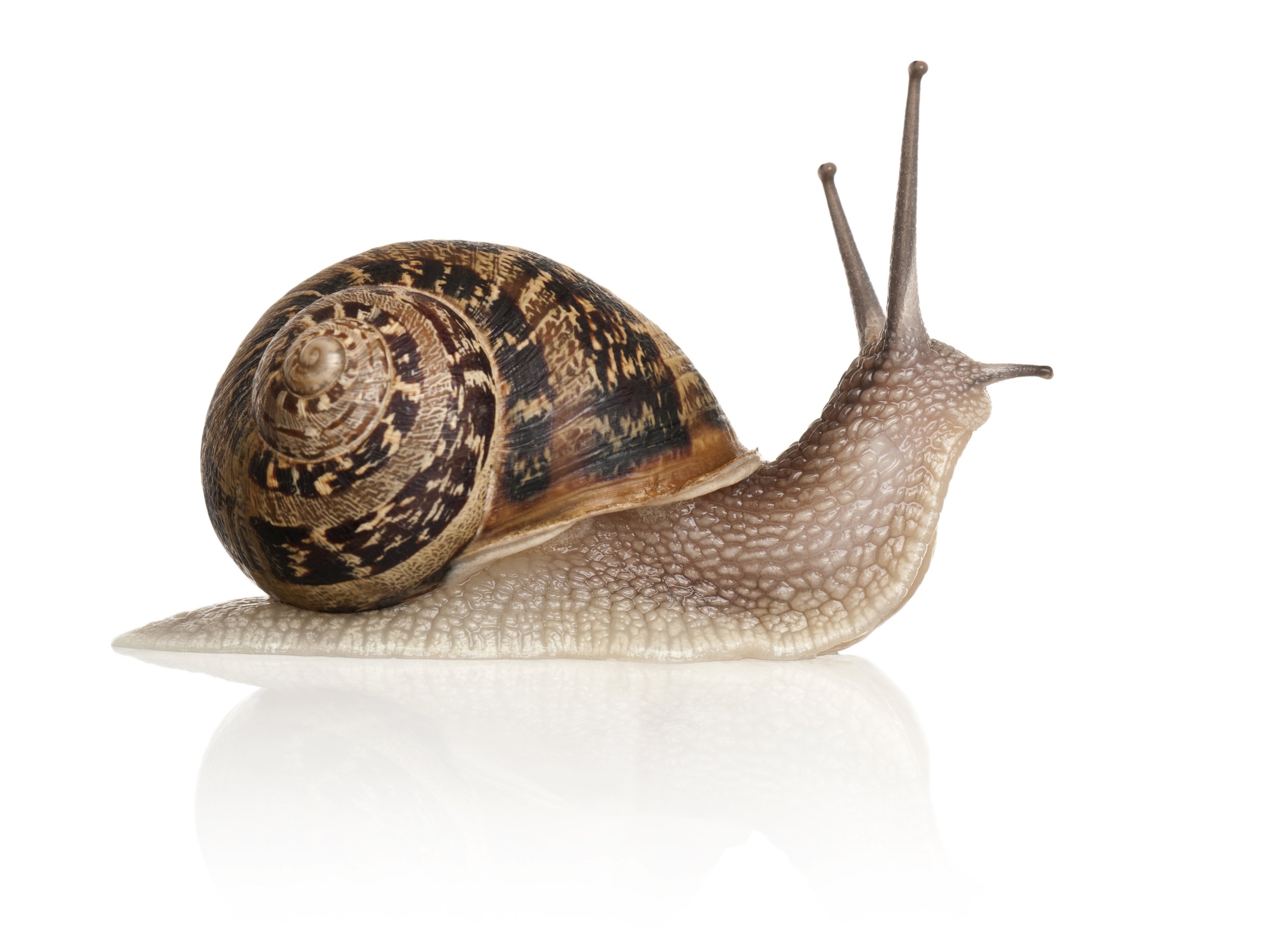snail species
“Escargot” can refer to a number of snail species. Snails are eaten by many cultures around the world but most Americans know of the species commonly found in Europe. While all are found in North America, they are all considered invasive plant pests which is why their movement is regulated. Below are some of the species most commonly consumed.
Although the average person thinks a snail is a snail, there are approximately 60,000 species of snails spread over the earth. Many of these are marine species, such as periwinkle or conch; still others live in freshwater. Terrestrial snails, or those that live on land, are those used for what is traditionally known as escargot, with marine and freshwater snails also eaten.
Although there are many species of snails that can be eaten, we will only outline four main species that are regularly consumed or farmed today:
CORNU ASPERSUM
Also called Helix aspersa, this snail, along with H. aspersum Maxima, have become the species farmed throughout Europe. While smaller than H. pomatia, it is highly adaptable to a farm setting.
OTALA LACTEA
Commonly known as the milk or Spanish snail, it is popular for use in paella and soups. Native to Europe and parts of North Africa, it has been introduced to the U.S., including Arizona and Florida, and to Bermuda, Cuba, southeastern Australia and is considered an invasive agricultural pest. Usually a bit smaller than C. aspersum, it also has a domed shell but much flatter than either the H. pomatia or C. aspersum.
HELIX POMATIA
Commonly called by a variety of names including the Roman snail, the Burgundy snail or the vineyard snail. Although this species is highly prized as a food it is difficult to cultivate and rarely successfully farmed commercially. In fact, it is so rare in France that hunting licenses are required when this species is “in season.”
THEBA PISANA
Theba pisana, whose common names include the white garden snail, sand hill snail, white Italian snail, Mediterranean coastal snail, and simply just the Mediterranean snail, is an edible species of terrestrial snail. With a proclivity to climb, they can be a serious pest to both ornamental and crop plantings. Due to their smaller size, they are generally used in soups and as an appetizer across countries bordering the Mediterranean.
CEPAEA NEMORALIS
Highly variable in its colors and patterns, from a bright, butter yellow to beige with brown stripes, the grove or brown-lipped snail is smaller than both the Cornu and Helix pomatia, but still a popular edible snail. The bane of farmers, it is highly invasive in habitats from swampy wetlands to dry fields where it destroys grain crops.
ACHATINA SPP.
Known for its enormous size, upwards of 10 inches in length, various species commonly called “Giant African land snails” have colonized mostly subtropical areas of the U.S. While edible, they are illegal to own in North America due to the damage they cause to crops and as a carrier of disease. Florida in particular has spent years, and millions of dollars, attempting to eradicate it from its borders.
They remain a delicacy in African countries and are increasingly being farmed there.






